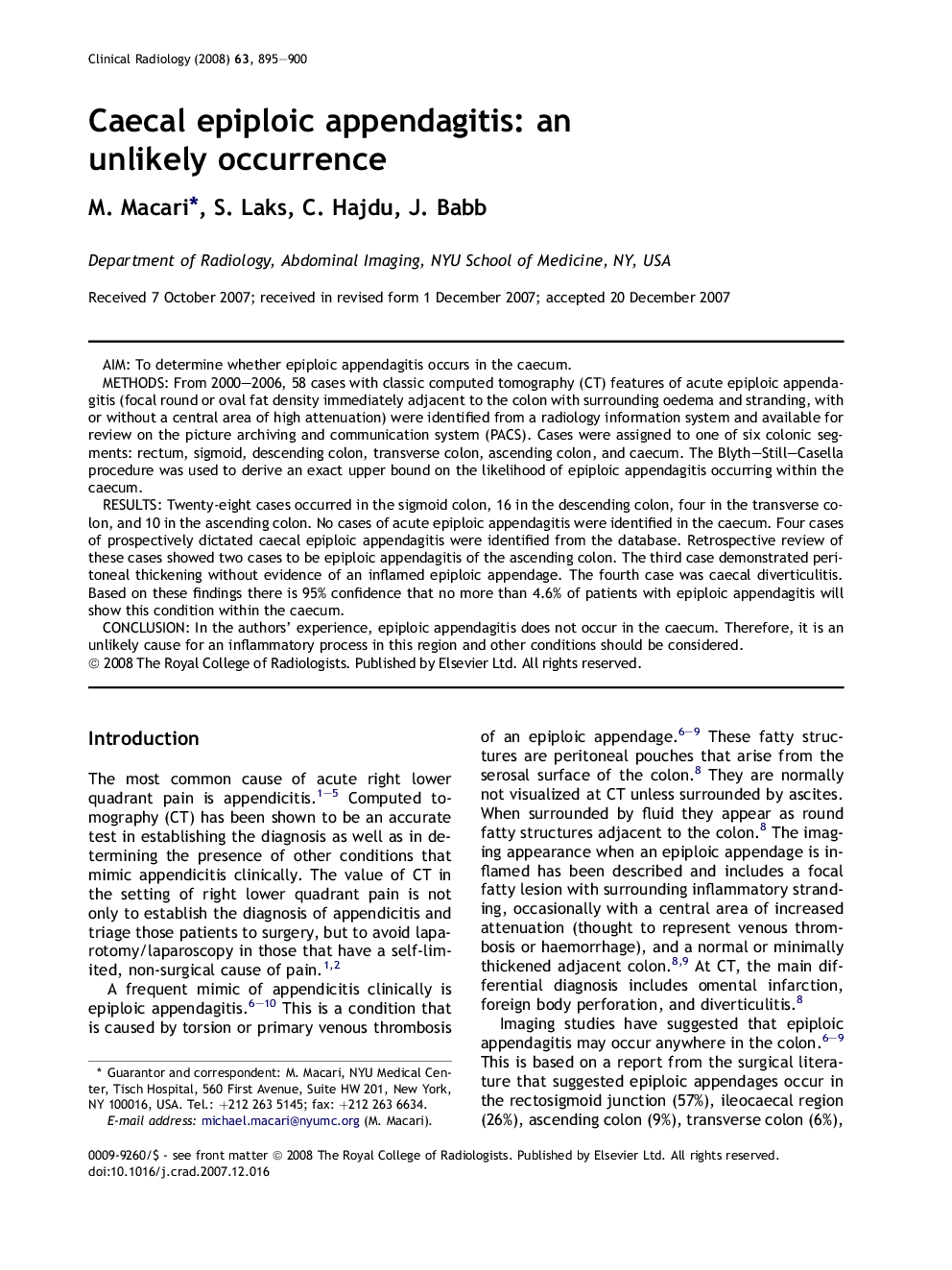| Article ID | Journal | Published Year | Pages | File Type |
|---|---|---|---|---|
| 3984071 | Clinical Radiology | 2008 | 6 Pages |
AimTo determine whether epiploic appendagitis occurs in the caecum.MethodsFrom 2000–2006, 58 cases with classic computed tomography (CT) features of acute epiploic appendagitis (focal round or oval fat density immediately adjacent to the colon with surrounding oedema and stranding, with or without a central area of high attenuation) were identified from a radiology information system and available for review on the picture archiving and communication system (PACS). Cases were assigned to one of six colonic segments: rectum, sigmoid, descending colon, transverse colon, ascending colon, and caecum. The Blyth–Still–Casella procedure was used to derive an exact upper bound on the likelihood of epiploic appendagitis occurring within the caecum.ResultsTwenty-eight cases occurred in the sigmoid colon, 16 in the descending colon, four in the transverse colon, and 10 in the ascending colon. No cases of acute epiploic appendagitis were identified in the caecum. Four cases of prospectively dictated caecal epiploic appendagitis were identified from the database. Retrospective review of these cases showed two cases to be epiploic appendagitis of the ascending colon. The third case demonstrated peritoneal thickening without evidence of an inflamed epiploic appendage. The fourth case was caecal diverticulitis. Based on these findings there is 95% confidence that no more than 4.6% of patients with epiploic appendagitis will show this condition within the caecum.ConclusionIn the authors' experience, epiploic appendagitis does not occur in the caecum. Therefore, it is an unlikely cause for an inflammatory process in this region and other conditions should be considered.
